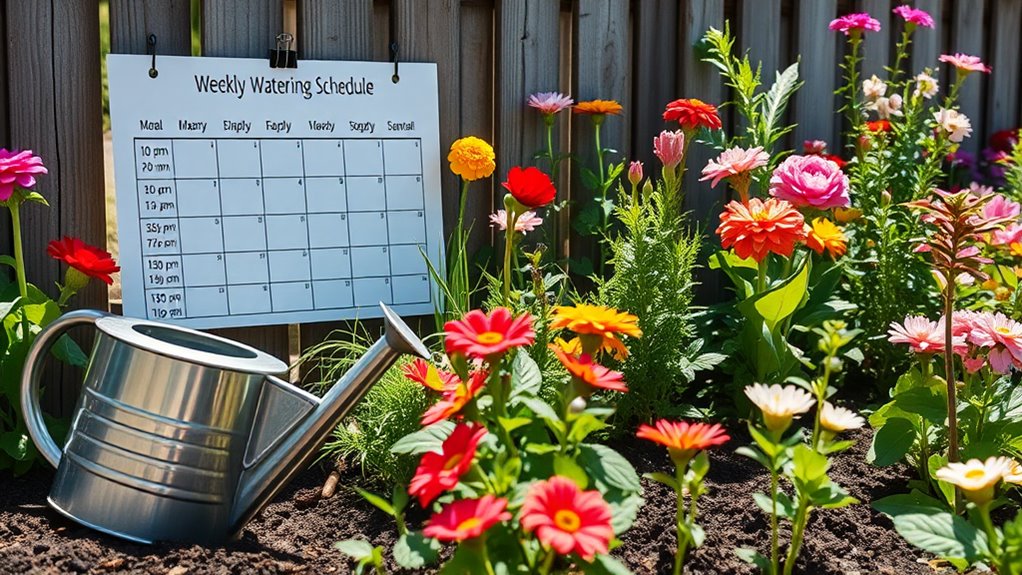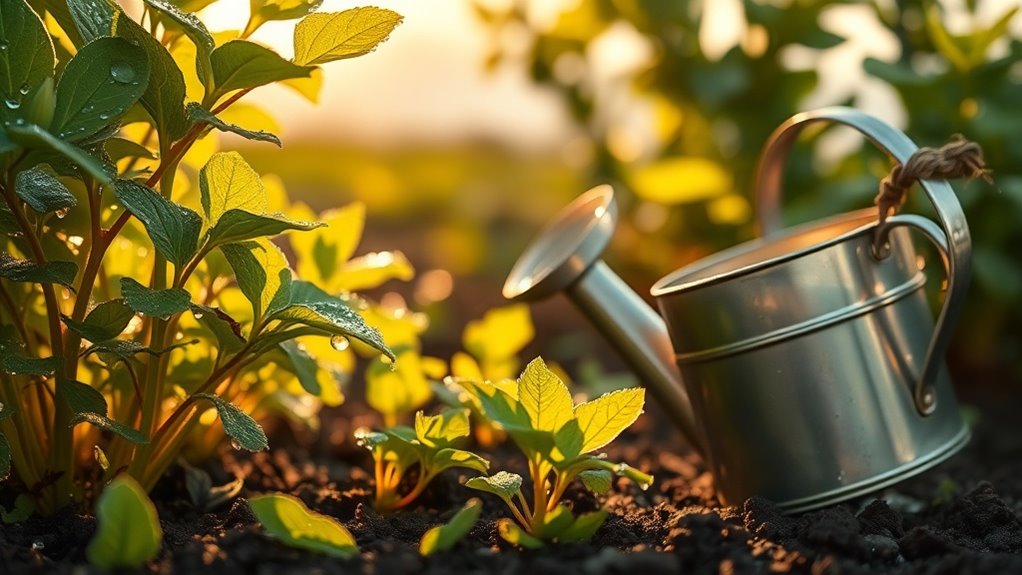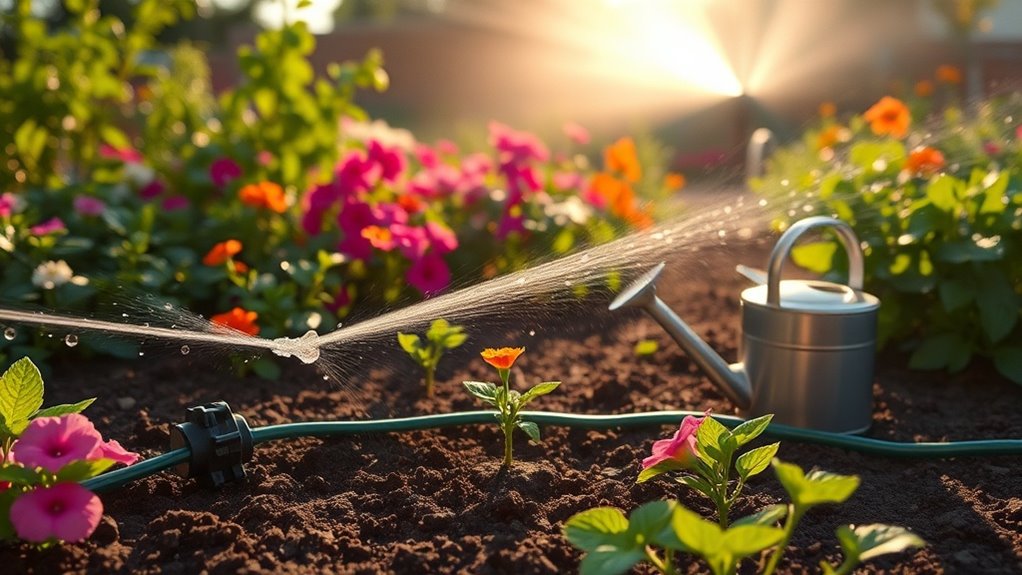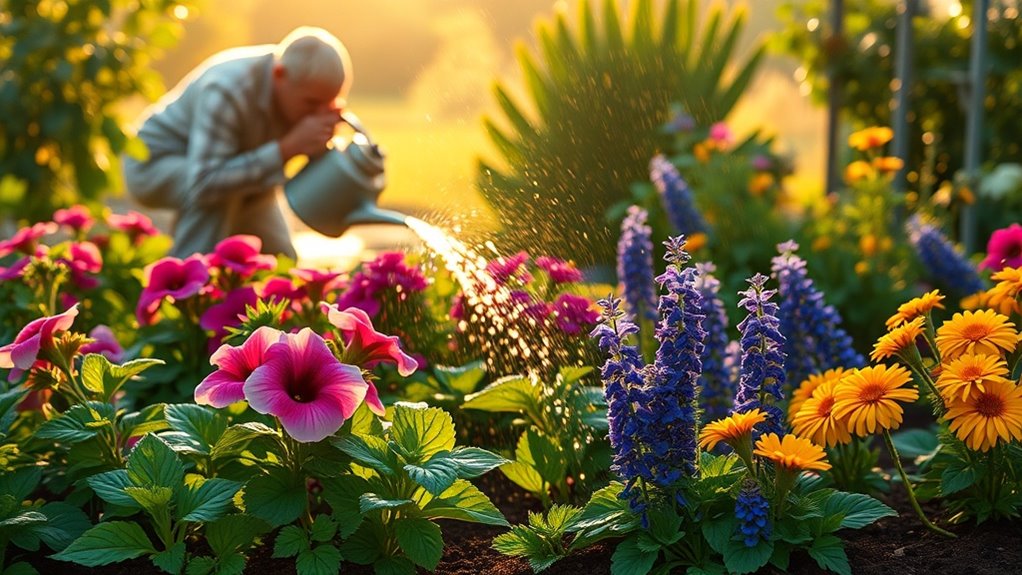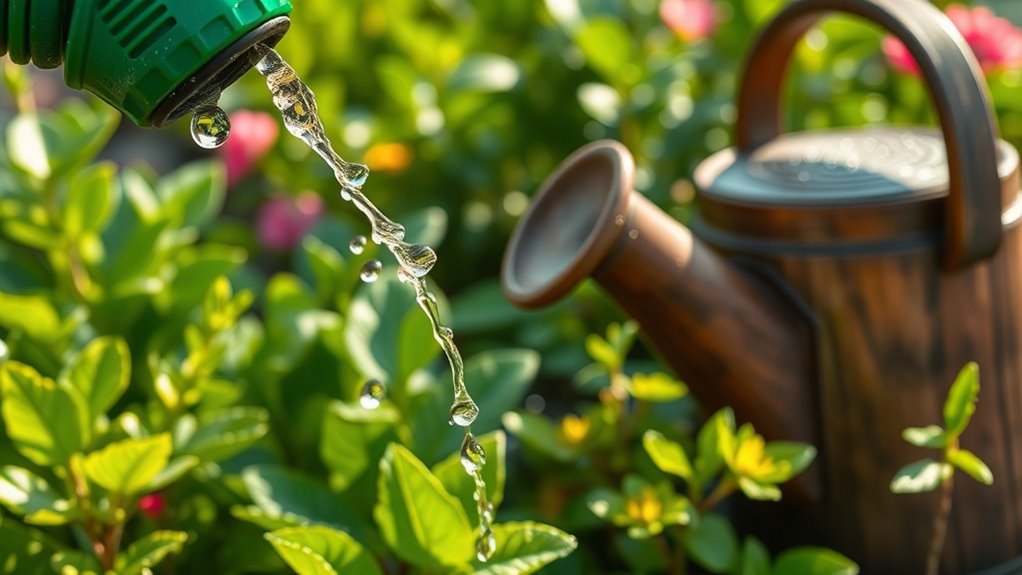I Watered Wrong for Years-This Simple Schedule Changed Everything
Imagine watching your once-vibrant tomatoes wilt and shrivel because you’re unsure how often to water. It’s frustrating, isn’t it? Many gardeners face this challenge, often watering inconsistently, leading to under or overwatering. Understanding how to establish a simple watering schedule can revolutionize your garden. By following practical steps tailored to your plants’ needs, you might just discover the secret to a flourishing garden that you’ve been missing.
Understanding the Importance of Proper Watering
When you understand the importance of proper watering, you can significantly enhance your garden’s health and productivity.
Establishing a consistent watering schedule is crucial; it prevents overwatering and underwatering. Tailor your schedule according to weather conditions and plant needs.
Early mornings are generally best, allowing plants to absorb moisture before the heat. Proper watering not only promotes healthy growth but also helps avoid common mistakes that can hinder your garden’s success.
Follow these watering schedule tips for thriving plants and a flourishing garden.
Signs Your Plants Are Underwatered
Sometimes, it can be challenging to determine when your plants need water, but there are several clear signs to watch for that indicate underwatering.
Look for wilting leaves, dry soil, and browning leaf tips. If your plants begin dropping leaves or the stems appear shriveled, it’s a sure sign they’re thirsty.
Pay close attention, and adjust your watering schedule accordingly. Additionally, remember that overwatering signs such as yellowing leaves can often be confused with underwatering, so it’s essential to assess your plants carefully before deciding to water.
Common Mistakes in Watering Techniques
While it’s easy to assume that watering more often is the key to keeping your plants healthy, many gardeners fall into common pitfalls that can lead to problems.
Overwatering, for example, drowns roots and fosters disease.
Additionally, watering at the wrong time—like during peak sun—can cause evaporation.
Lastly, inconsistent watering leads to stressed plants, making them vulnerable to pests and diseases. To manage these issues effectively, consider adopting heat-proof watering techniques that help to maintain your garden’s hydration levels during extreme conditions.
Developing a Sustainable Watering Schedule
To cultivate a thriving garden, you need to establish a sustainable watering schedule that aligns with your plants’ specific needs and the local climate.
Follow these tips for effective watering:
- Assess soil moisture regularly
- Water early in the morning
- Use deep watering techniques
- Consider plant types and sizes
- Adjust frequency based on rainfall
Implementing this schedule keeps your garden healthy and resilient. Additionally, using deep watering techniques allows soil moisture to reach the roots, promoting optimal growth and reducing the frequency of watering sessions.
Adjusting for Seasonal Changes
As temperatures change with the seasons, it’s crucial to adjust your watering schedule to ensure your plants receive the right amount of moisture. Here’s a simple guideline to help you:
| Season | Watering Frequency |
|---|---|
| Spring | Every 3-4 days |
| Summer | Every 2-3 days |
| Fall | Every 5-7 days |
| Winter | Every 10-14 days |
| Heat Waves | Daily as needed |
Adjust based on rainfall and plant needs! Additionally, understanding watering timing strategies can help gardeners optimize their irrigation practices for healthier gardens.
Benefits of Consistent Watering Practices
Consistent watering practices offer numerous benefits that significantly enhance your garden’s health and vigor.
When you stick to a reliable schedule, you can expect:
- Improved root development
- Enhanced nutrient absorption
- Reduced plant stress
- Better disease resistance
- Increased yields

